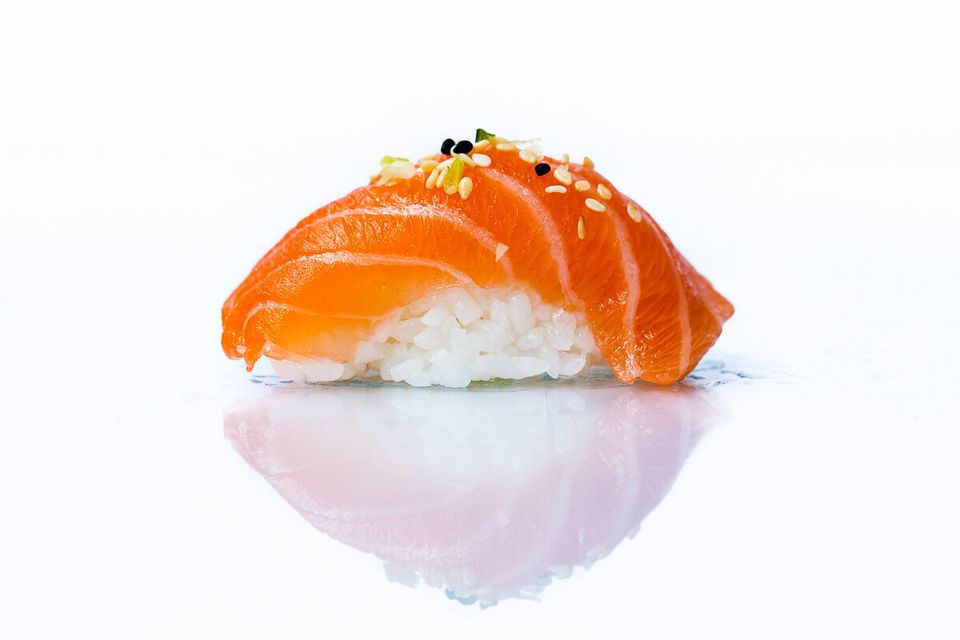
The ancient poet Rumi once said: "The satiated man and the hungry man do not see the same thing when they look upon a loaf of bread."
Although in today's world that loaf of bread may be gluten-free or sprouted, the truth of that quote still rings true: our perception of food varies depending on our relationship with it.
Consider this: A dinner plate with chicken, salad and rice can be something very different depending on who it is placed in front of.
A dieter may see the meal's total calorie content, an athlete may look upon a plate of fuel in the form of grams of protein, a vegetarian might glance down at the slaughter of a chicken, and a scientist who is studying nutrient content in food may gaze at a collection of chemicals and molecules.
What is remarkable about that dinner plate is that each of those individual's bodies would metabolize and react to that same meal in very different ways based on how each of them relates to it, because one of the most essential components of metabolism isn't a vitamin, a chemical or a molecule -- it is your psychological relationship with the food, meaning that how you think and feel about what you are about to eat impacts how your body digests it.
Your Brain on Food

Your emotional connections with certain foods are largely responsible for the way your body responds to them on a physiological level. When you eat, your brain releases powerful chemicals such as endorphins (that make you feel good) and dopamine (which can motivate you to keep munching).
For instance, decadent treats such as cookies or ice cream can release more endorphins than eating something naturally sweet and potentially healthier, such as fruit. Although both of these foods contain sugar, they are different types of sugar that affect the body very differently.
For example, a large banana has approximately 17 grams of sugar (which is about the same amount as a chocolate-glazed doughnut). Given the choice between the two, many people reach for the doughnut to cure a sweet tooth. Why? The highly processed, refined sugar reaches the bloodstream faster than the naturally occurring sugar from the bananas, which creates a speedier (but shorter lived) endorphin rush than the fruit.
That instant spike of feel-good chemicals could be the reason you reach for a second doughnut despite your better judgment or continue to crave them after the box is empty.
Food for Thought
The thoughts you have while you chomp on a doughnut actually play a role in how you metabolize it. If you are feeling guilt or shame about eating the extra calories, you trigger a stress response that can slow digestion and even increase fat storage. The same goes if you're having negative thoughts about a healthy meal ("Ugh, chicken and broccoli again?").
Here's how it works: the negative neural signals initiate an inhibitory response in the digestive organs, preventing the body from fully metabolizing the food. This inhibitory response also affects hormones (such as insulin and cortisol), which can lower the calorie burning efficiency of our body and cause us to store more of the food as fat.
Use Your Head
Next time you sit down to a meal, don't just go through the motions, make a conscious effort to eat mindfully. Mindful eating can not only enhance the experience of the meal but also help you learn to eat when you're hungry, stop when you're full and control cravings.
- Slow down: Eating is not a race, so take the time to chew your food slowly. Savour and enjoy the flavours in every bite.
- Unplug: Make mealtime a tech-free time. Turn off all electronic devices and distractions before sitting down to eat.
- Connect: Think and reflect about where you food came from. Taking time to connect with your food will allow for a deeper appreciation of what is being eaten.
- Practice gratitude: Allow every opportunity to eat to be a time for you to give thanks and be grateful that you are eating.
Follow HuffPost Canada Blogs on Facebook
MORE ON HUFFPOST:
